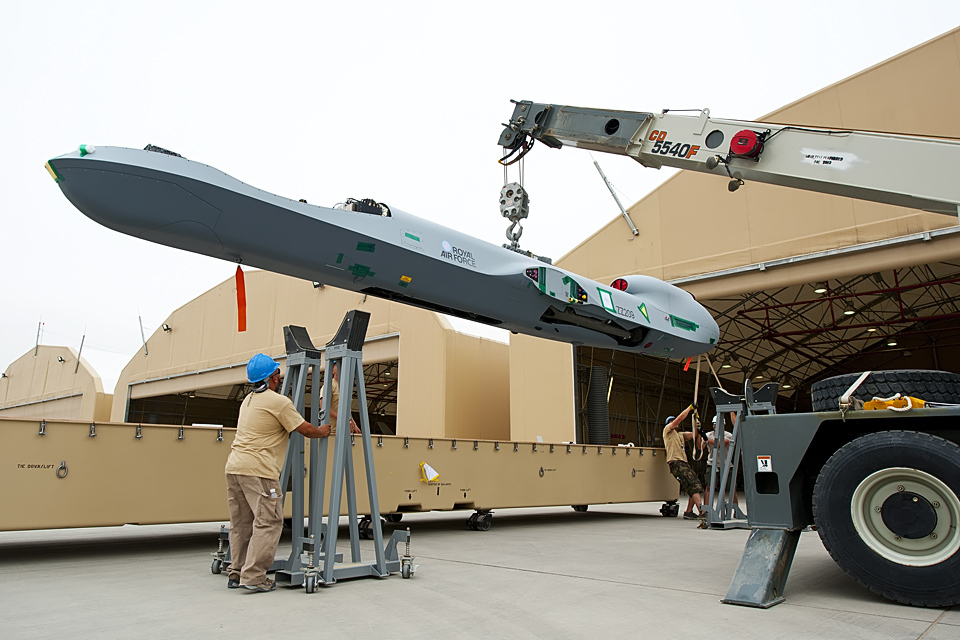New RAF Reapers take to the skies
Five more RAF Reaper remotely-piloted aircraft have begun supporting operations in Afghanistan.

An RAF Reaper remotely-piloted aircraft at Kandahar Airfield in Afghanistan [Picture: Flight Lieutenant Tony Durrant, Crown copyright]
The additional Reaper aircraft are flying from Kandahar Airfield to gather vital intelligence in support of Afghan, UK and International Security Assistance Force (ISAF) troops on the ground.
The deployment of 5 new Reapers means there are now twice as many in Afghanistan, operating alongside the British Army’s Hermes 450 unmanned air systems.

An RAF Reaper is delivered, in kit form, for assembly at Kandahar Airfield [Picture: Sergeant Ross Tilly RAF, Crown copyright]
Reaper will play a vital role in securing internal security in Afghanistan once allied forces draw down from the country later this year.
Monitoring areas of interest for a considerable period of time, Reapers provide real-time feedback, allowing the ground crew to conduct a detailed assessment of any target and the environment they are operating in to minimise the risk of civilian casualties or unnecessary damage to property.
Although their primary role is gathering intelligence and providing surveillance and reconnaissance support to ground forces, Reaper can also be armed with laser-guided bombs and Hellfire missiles when the situation demands it.
In over 54,000 hours of operations using Reaper in Afghanistan, only 459 weapons have been fired, which is less than one weapon for every 120 hours of flying.

Unboxing the fuselage of an RAF Reaper at Kandahar Airfield [Picture: Sergeant Ross Tilly RAF, Crown copyright]
Minister for Defence Equipment, Support and Technology, Philip Dunne, said:
These new aircraft give the RAF enhanced force protection capability in support of UK, ISAF and Afghan troops. As we focus on the drawdown of UK forces from Afghanistan, the ability to provide force protection will become increasingly important and Reaper allows us to provide this assurance remotely, and without significant ground presence.

Civilian contractors assembling an RAF Reaper at Kandahar Airfield [Picture: Sergeant Ross Tilly RAF, Crown copyright]
Air Commodore Al Gillespie, the Air Component Commander and Air Officer Commanding 83 Expeditionary Air Group, is responsible for the command and control of UK air assets over Afghanistan. He said:
These aircraft will support UK, ISAF and Afghan forces as they work to protect the people of Afghanistan. They provide vital intelligence and precise strike capability without putting our servicemen and women at risk.
As we drawn down from Afghanistan it is precisely this technology that will keep us one step ahead and allow us to combat internal security in the country.

A fully-assembled RAF Reaper at Kandahar Airfield [Picture: Flight Lieutenant Tony Durrant, Crown copyright]
Updates to this page
-
Correctly credited second photographer
-
First published.